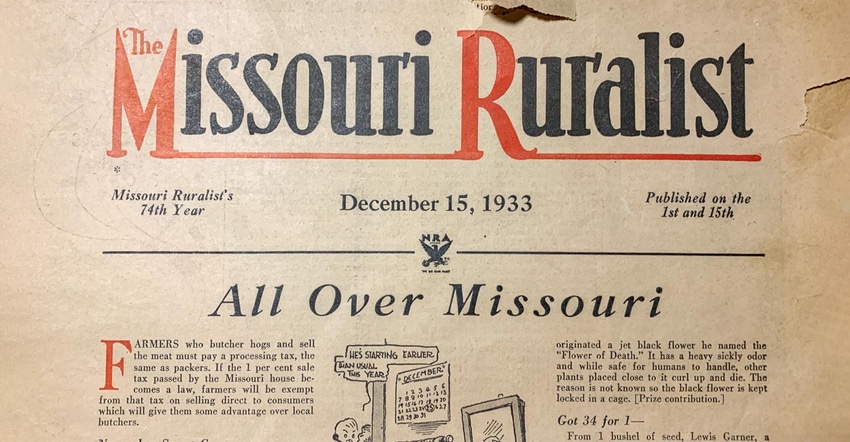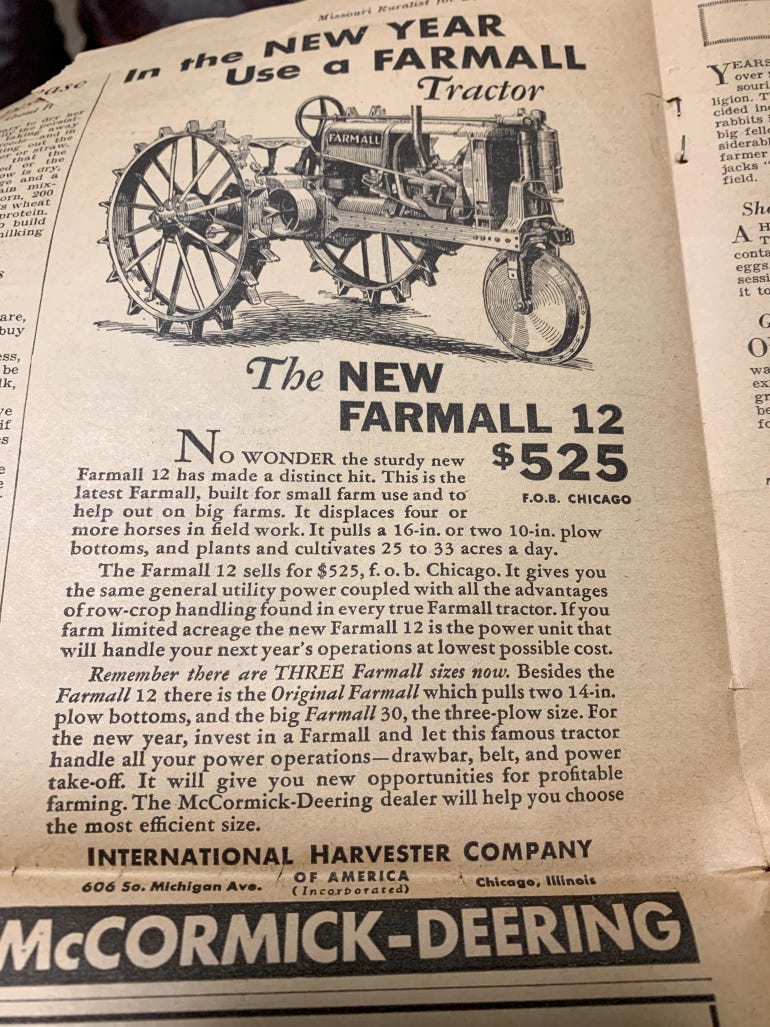August 14, 2020

With the first waft of air after opening the envelope, I knew this was something old. It had that musty, been-in-the-antique-drawer-for-decades scent. I pulled out the cardboard stuffed inside and gingerly took one piece off another. There it was — a brown, slightly torn, severely worn 87-year-old copy of The Missouri Ruralist, full of history.
John Wegrzyn of Belleville, Ill., reached out to me a month ago and told me he had an old copy of the magazine. “I just think you should have it,” he said. I asked about cost, and he laughed. “No, I think it belongs to you and your company," he said.
Mr. Wegrzyn could’ve trashed this piece of history, and by today’s standards, perhaps he should’ve. After all, flipping through the magazine, there were some truly offensive things.
Learning from the past
First, there is the advertisement that reads, “How to keep a wife on 7½ cents a day.” I read it aloud to my husband, who quipped, “Well, that’s cheap. Maybe we should try it?” Not going to happen. To top it off, it was an ad for tobacco stating that the smell of the smoke keeps women happy.
I should’ve been appalled because tobacco causes cancer, and women are not “kept,” but in context, Missouri was a top tobacco-producing state. The ad made sense. However, the attention to women could’ve made me walk to the trash can myself and give the paper a toss, but I kept flipping through it and found pages and articles devoted to women, written by women. So, the magazine actually revered women.

GIRL POWER: There were not many photos in the publication. The most prominent one was titled “Healthiest American Girl Lives in Howard County.” It identified Shirley Caroline Drew (left), 17, of Fayette, Mo., and Clista Millspaugh, 16, of Mount Pleasant, Iowa, who tied for the honors among girls, and Glenn L. Sherwood, 19, of Larned, Kan., as the healthiest boy. The Ruralist is one magazine that continues the tradition of honoring both 4-Hers and women in print and online.

Second, there is the news article “Marked Corn Brought Arrest,” which tells of corn theft in Moberly. It read, “Later the premises of John Blake, colored, was searched, and some of the marked corn was found.” There it is, an offensive word in an agriculture publication — my agriculture publication. I took a step back.
I cannot fathom referring to anyone in my articles by skin tone or ethnicity. Shoot, I'm more likely to identify them by show stock species — cattle, hogs, sheep, goat — and further by livestock breed. And while I believe this publication has made great strides forward, I realize there is more to do. It is up to my generation to raise the next generation to be colorblind.
Still positives in publication
There were plenty of short paragraphs on markets, crop progress and government programs.
It was interesting that the lead paragraph/article in the December 1933 issue was, “Farmers who butcher hogs and sell the meat must pay a processing tax, the same as packers. If the 1 percent sales tax passed by the Missouri house becomes law, farmers will be exempt from that tax on selling direct to consumers, which will give them some advantage over local butchers.” The meat industry had issues way back then.
But it was the local aspect of each paragraph that made me smile:
“When Lon Huskey’s house burned in Butler County, November 26, with all his furniture and what he had to keep his seven children thru the winter, he was stunned. There was no insurance. But from their store, the neighbors gave them clothes, flour, cash, stoves and 20 quilts. The family now bravely faces the coming cold. And this Thanksgiving, each neighbor was more humbly grateful for his blessings.”

TRACTOR SALES: Who wouldn’t want a tractor for $525? Still, in 1933, that was a good chunk of change for many farmers. It is all about putting history in perspective.

Now, that history seems to transcend time in the farming, small-town, rural America I know and love. However, if you just remove this one magazine, there would be no record of the good in our state and our country. Those acts of kindness need to be remembered, fostered and practiced. I don’t want this type of history erased. And yet, we don’t want to repeat our past mistakes. We need to learn from them, be better.
I’m so grateful to Mr. Wegrzyn for preserving the past. It reminds me of how far we have come, how much we’ve yet to do, and how our rural roots should lead the way in spreading kindness to all those we meet.
You May Also Like




